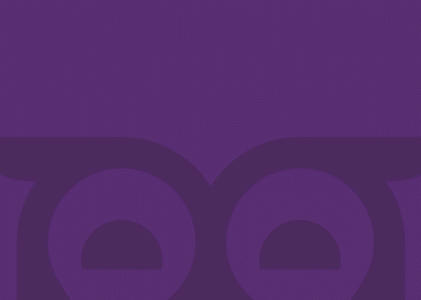Can Eating Disorders Be Treated With Cognitive Behavioral Therapy?
What is Cognitive Behavioral Therapy (CBT)?
Cognitive Behavioral Therapy (CBT) is a popular form of evidence based treatment, also known as talk therapy. It includes a structured relationship with a mental health counselor and several therapy sessions.
Developed by psychiatrist Aaron Beck in the 1960s, CBT is based on converting negative core beliefs and thought patterns into positive ones while examining the relationships between those thoughts, emotions, and behaviors.
This therapy approach assists you in becoming aware of inaccurate or negative thoughts to better understand and respond to challenging situations.1 Various mental health issues, including eating disorders, are treated with this directive, time-limited, and structured method.2
How Does CBT for Eating Disorders Work?
CBT therapy for eating disorders typically includes the following components:3
- Challenging dietary restrictions: identifying rules and behaviorally challenging them, such as eating after 8 p.m. or eating a sandwich for lunch
- Immediately after eating, filling out a food journal and noting thoughts, feelings, and eating behaviors
- The creation of preventative measures such as using alternatives, delays, and problem-solving techniques to stop binges and compensatory behaviors
- Exposure to fear-inducing food – patients gradually reintroduce items they fear as soon as regular eating is well-established and compensatory behaviors are managed
- Meal planning – the patient should always be aware of “what and when” their next meal will be
- To replace all-or-nothing thinking, the patient develops continuum thinking
- Psychoeducation to comprehend the causes of the eating disorder and its effects on the mind and body
- Weekly weighing to monitor development and conduct research
- Relapse prevention to determine practical tactics and how to handle potential future roadblocks. The aim is for the patient to become their own therapist because CBT eating disorder therapy is time-limited.
- Use of behavioral studies. For instance, a client might be pushed to eat a piece of cake to see if it contributes to a five-pound weight increase if they think it will. These behavioral studies typically yield far better results than just cognitive restructuring.
Insurance may be able to help cover the cost of therapy.
Athena Care is in-network with most major insurance plans. Find out more about your insurance coverage by calling your insurance company or by contacting us below. One of our care coordinators can help you navigate your insurance coverage to get the care you need.
Use of Cognitive Behavioral Therapy in Eating Disorder Treatment
The late 1970s saw the development of CBT therapy for eating disorders. G. Terence Wilson, Christopher Fairburn, and Stuart Agras developed this 20-session therapy program4 and started performing clinical studies. They identified dietary restriction, anxiety about one’s appearance, and weight as key factors in the maintenance of bulimia nervosa. Today, CBT is the most effective evidence-based treatment for bulimia nervosa.5
Cognitive Behavioral Therapy for eating disorders such as binge eating was later used in the 1990s. Finally, Fairburn produced a treatment manual for Enhanced Cognitive Behavioral Therapy (CBT-E) to treat all eating disorders in 2008.
Setting short-term goals and making adjustments necessary to attain each goal is how CBT eating disorder treatment works. This engaging therapy usually lasts about twenty weeks. It concentrates on the behavioral and cognitive adjustments needed to establish healthy functioning. Worksheets, tasks, and homework are given both inside and outside of therapy. Additionally, many therapists will request that the patient keep a thought journal to identify any distorted or critical thinking.
A nutritionist, therapist, doctor, and psychiatrist are usually members of the treatment teams.
Although some people can receive treatment on an outpatient basis, most people eventually require a more advanced level of care, such as inpatient or residential facilities. You can also use Cognitive Behavioral Therapy for eating disorders in group settings.
Effectiveness & Success in Using CBT for Eating Disorders
One study compared two years of weekly psychoanalytic therapy with five months of Cognitive Behavioral Therapy (20 sessions) for women with bulimia nervosa. Seventy patients were assigned to either group at random.
42% of the patients in the CBT group and 6% in the psychoanalytic therapy group had quit purging and bingeing after five months of therapy (the conclusion of the CBT treatment). In addition, 44% of the CBT patients and 15% of the psychoanalytic patients were symptom-free after two years (the conclusion of psychoanalytic therapy).6
In another study, clinicians compared Enhanced Cognitive Behavioral Therapy (CBT-E) to Interpersonal Therapy (IPT), an alternative treatment for eating disorders. One hundred thirty adult patients with eating disorders participated in the trial. They were randomized to receive either CBT-E or IPT treatment. Each treatment consisted of 20 sessions spread out over 20 weeks, followed by a follow-up period of 60 weeks.
Compared to only 33% of the IPT participants, 66% of the CBT-E participants at post-treatment satisfied the criteria for remission. Furthermore, the CBT-E remission rate remained higher (69% vs. 49%) during the follow-up period.7
Is CBT Enough to Treat an Eating Disorder?
Did you know that 9% of Tennesseeans will have an eating disorder in their lifetime?8
CBT demonstrates high success rates in treating eating disorders and is considered the first line of treatment, especially for bulimia nervosa and binge eating disorders. Additional therapies are always beneficial, however. For example, if CBT is undergone in an outpatient setting at a behavioral health clinic with little success or relapse, trying a higher form of care such as a residential program could help.
Family-based treatment (FBT) is another alternative. Studies have shown great success, particularly in patients with anorexia nervosa,9 when patients have a solid, supportive circle of trusted friends and family.
Furthermore, while medication is not typically the first line of treatment for most eating disorders, it may be beneficial as a supplement for CBT eating disorder treatment. Medication may help with the symptoms of anxiety and depression, which are common in persons with eating disorders.
Before starting any psychiatric medication regimen, a comprehensive diagnostic assessment by a qualified mental health clinician is always advised. It’s important to determine whether anxiety and mood symptoms existed before the eating disorder or if they could be signs of malnutrition.10
Sources
- “Cognitive Behavioral Therapy.” Mayo Foundation for Medical Education and Research (MFMER), 2022, https://www.mayoclinic.org/tests-procedures/cognitive-behavioral-therapy/about/pac-20384610
- Fenn, Kristina, and Majella Byrne. “The Key Principles of Cognitive Behavioural Therapy.” InnovAiT: Education and Inspiration for General Practice, vol. 6, no. 9, 2013, pp. 579–85. Crossref, https://doi.org/10.1177/1755738012471029.
- Jong, Martie de, et al. “Enhanced Cognitive Behavioural Therapy for Patients with Eating Disorders.” Current Opinion in Psychiatry, vol. 31, no. 6, 2018, pp. 436–44. Crossref, https://doi.org/10.1097/yco.0000000000000452.
- Agras, W. Stewart, et al. “Evolution of Cognitive-Behavioral Therapy for Eating Disorders.” Behaviour Research and Therapy, vol. 88, 2017, pp. 26–36. Crossref, https://doi.org/10.1016/j.brat.2016.09.004.
- Murphy, Rebecca, et al. “Cognitive Behavioral Therapy for Eating Disorders.” Psychiatric Clinics of North America, vol. 33, no. 3, 2010, pp. 611–27. Crossref, https://doi.org/10.1016/j.psc.2010.04.004.
- Poulsen, Stig, et al. “A Randomized Controlled Trial of Psychoanalytic Psychotherapy or Cognitive-Behavioral Therapy for Bulimia Nervosa.” American Journal of Psychiatry, vol. 171, no. 1, 2014, pp. 109–16. Crossref, https://doi.org/10.1176/appi.ajp.2013.12121511.
- Fairburn, Christopher G., et al. “A Transdiagnostic Comparison of Enhanced Cognitive Behaviour Therapy (CBT-E) and Interpersonal Psychotherapy in the Treatment of Eating Disorders.” Behaviour Research and Therapy, vol. 70, 2015, pp. 64–71. Crossref, https://doi.org/10.1016/j.brat.2015.04.010.
- US Census Bureau. “2018 National and State Population Estimates.” Census.Gov, U.S. Department of Commerce, 8 Oct. 2021, www.census.gov/newsroom/press-kits/2018/pop-estimates-national-state.html.
- Gorrell, Sasha, et al. “Family-Based Treatment of Eating Disorders.” Psychiatric Clinics of North America, vol. 42, no. 2, 2019, pp. 193–204. Crossref, https://doi.org/10.1016/j.psc.2019.01.004.
- Muhlheim, Lauren, PsyD, CEDS. “How Medication May Help Treat Eating Disorders.” Verywell Mind, Dotdash Media, Inc., 17 July 2020, www.verywellmind.com/medications-used-to-treat-eating-disorders-4153046.
If you suspect that you or someone you love suffers from mental health disorders, contact Athena Care today.
One of our friendly associates will help you get the help you need. Take this first step to feel better and take control.


